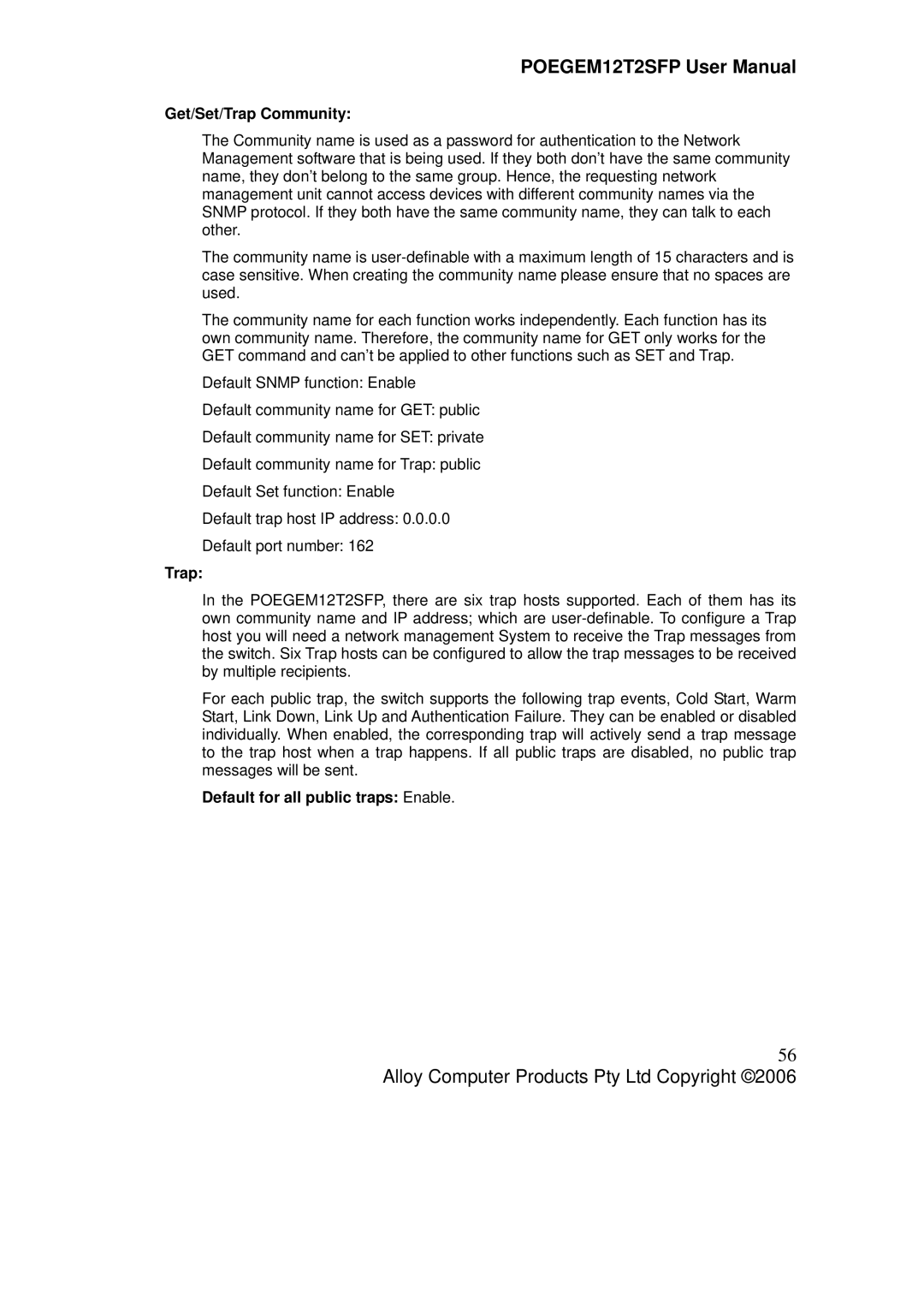POEGEM12T2SFP User Manual
Get/Set/Trap Community:
The Community name is used as a password for authentication to the Network Management software that is being used. If they both don’t have the same community name, they don’t belong to the same group. Hence, the requesting network management unit cannot access devices with different community names via the SNMP protocol. If they both have the same community name, they can talk to each other.
The community name is
The community name for each function works independently. Each function has its own community name. Therefore, the community name for GET only works for the GET command and can’t be applied to other functions such as SET and Trap.
Default SNMP function: Enable
Default community name for GET: public
Default community name for SET: private
Default community name for Trap: public
Default Set function: Enable
Default trap host IP address: 0.0.0.0
Default port number: 162
Trap:
In the POEGEM12T2SFP, there are six trap hosts supported. Each of them has its own community name and IP address; which are
For each public trap, the switch supports the following trap events, Cold Start, Warm Start, Link Down, Link Up and Authentication Failure. They can be enabled or disabled individually. When enabled, the corresponding trap will actively send a trap message to the trap host when a trap happens. If all public traps are disabled, no public trap messages will be sent.
Default for all public traps: Enable.
56
Alloy Computer Products Pty Ltd Copyright ©2006
